10 Plants That Look Like Aloe Vera but Are Not the Real Thing
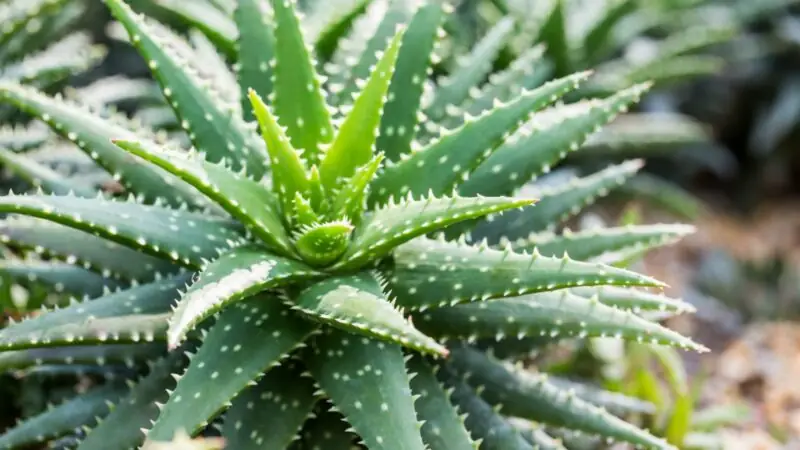
Have you ever come across a plant that looks like Aloe Vera but isn’t? It’s essential to recognize these plants, as they could be easily mistaken for the famous succulent. Some have different uses or even pose a danger. In this article, we will discuss ten plants that resemble Aloe Vera and provide an overview of each one.
Why You Need to Know Succulent Plants Similar to Aloe Vera
Aloe vera is a succulent plant known for its medicinal properties. It is commonly used in various products such as lotions, shampoos, and drinks. However, not all plants that look like it are safe to use or consume. Some can cause allergies, while others might be poisonous if ingested.
Moreover, identifying these lookalikes can prevent confusion when purchasing new houseplants or gardening outdoors. Knowing which ones are similar to the popular succulent helps avoid disappointment when expecting certain benefits from them.
There are many types of succulents with similarities in leaf shape, coloration patterns, and more. It can be challenging to identify them without proper knowledge. In this list of plants, we present ten common examples:
Agave Plant: Best-Known of 10 Plants That Look Like Aloe
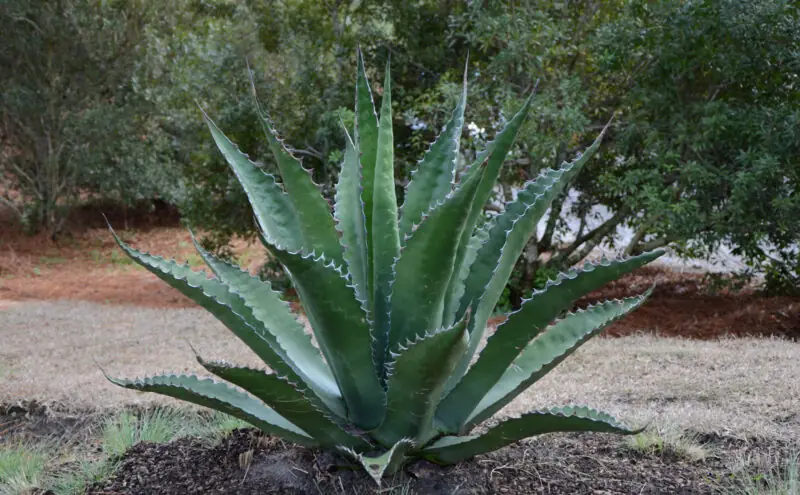
Agave (also often called Maguey plant) is a genus containing over two hundred species, primarily found in Mexico. They grow best in hot, dry conditions with well-drained soils and full sun exposure.
Agave Americana (American Century Plant)
The Agave americana, also called the American century plant, has thick fleshy leaves. They are arranged symmetrically around rosettes. This plant can reach up to six feet tall and wide. Like aloe plants Agave has spines along the edges and pointed tips. The plant also has yellow flowers on its stalks. It blooms after twelve years and then dies, replaced by smaller offsets at the base of the stem. To people who are not familiar with this plant, it might look very similar to Aloe Vera.
Agave Ovatifolia (Whale’s Tongue Agave)
The Agave ovatifolia, also known as the whale’s tongue agave, has blue-green leaves with smooth edges. It has no teeth or spines and can reach up to five feet long and wide. The rosettes grow up to three feet tall. This drought-tolerant plant can survive in temperatures as low as 10 degrees Fahrenheit.
Agave and aloe plants may be the very first species that come to mind when people mention succulents.
Ariocarpus: Blue-Grayish Impostor
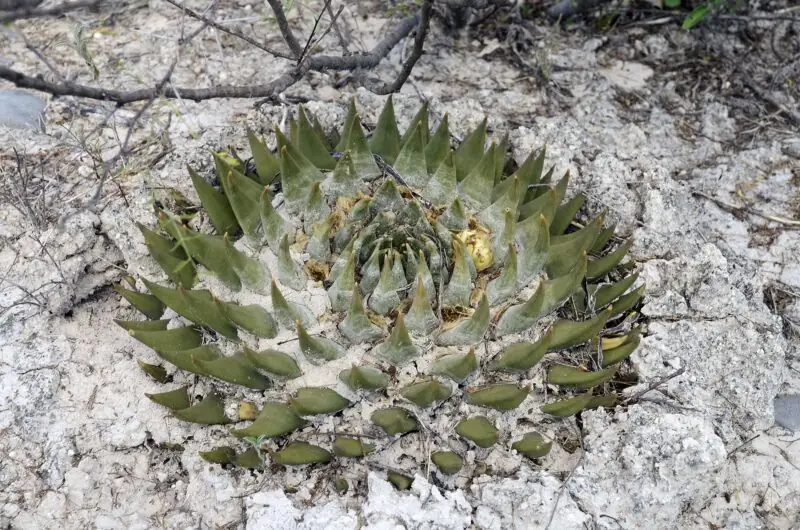
Ariocarpus is a genus of small cactus-like plants native to Texas and Mexico. They are characterized by their blue-grayish coloration and lack of visible leaves. The thick leaves of Ariocarpus make it have a similar appearance to Aloe.
Bergeranthus: Leaves Like That of Aloe Vera Plant
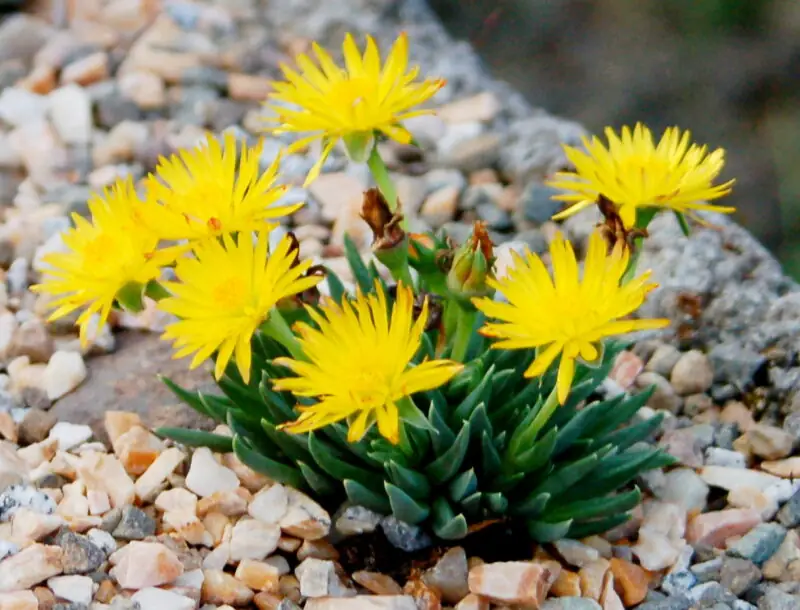
Bergeranthus is a genus containing about twenty species, primarily found in South Africa. These plants are known for their compact size and colorful flowers that bloom during the spring season: their thick juicy leaves make them look like an Aloe vera plant that has shed its teeth for some reason.
Dryland Bromeliads: Beautiful Flowers
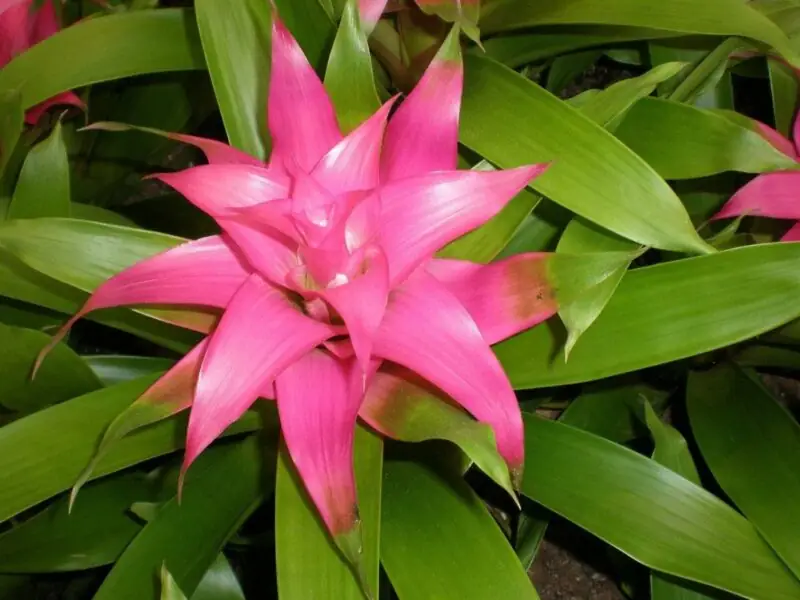
Dryland bromeliads are succulent plants typically found growing on rocks or trees in arid regions. They boast long-lasting foliage in various shades of green, yellow, and red; however, Drylangs don’t have teeth found on an Aloe vera plant’s leaves.
Tiger Jaws: Teeth Like That of Aloe Plant
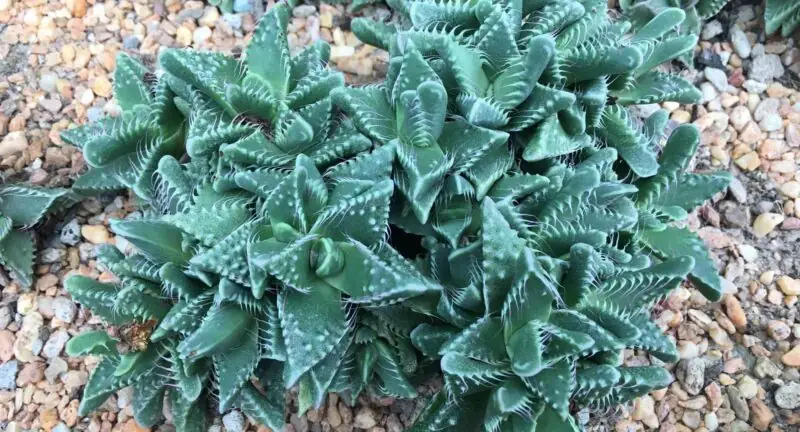
Tiger jaws (Faucaria Tigrina) are small succulents native to South Africa. They feature fleshy triangular-shaped leaves lined with serrated edges resembling a tiger’s teeth: they give the plant a similar appearance to Aloe vera. These plants produce bright yellow daisy-like flowers during the late winter months.
Ox Tongue Plant: More Succulents Like Aloe
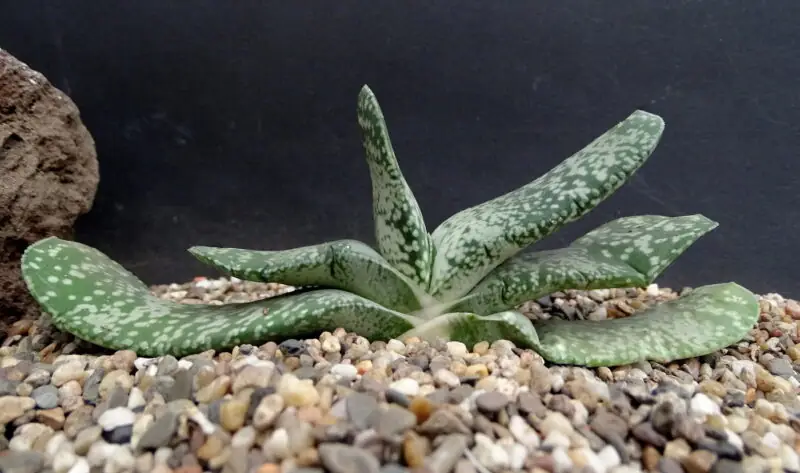
The ox tongue plant, also called Gasteria, has thick pointed greenish-brown leaves. The leaves are spotted with reddish-black variegations and arranged in a fan shape. This plant produces bi-colored tubular-shaped flowers from mid-summer through early fall.
Zebra Cactus Plant: Looks Like Aloe (Almost)
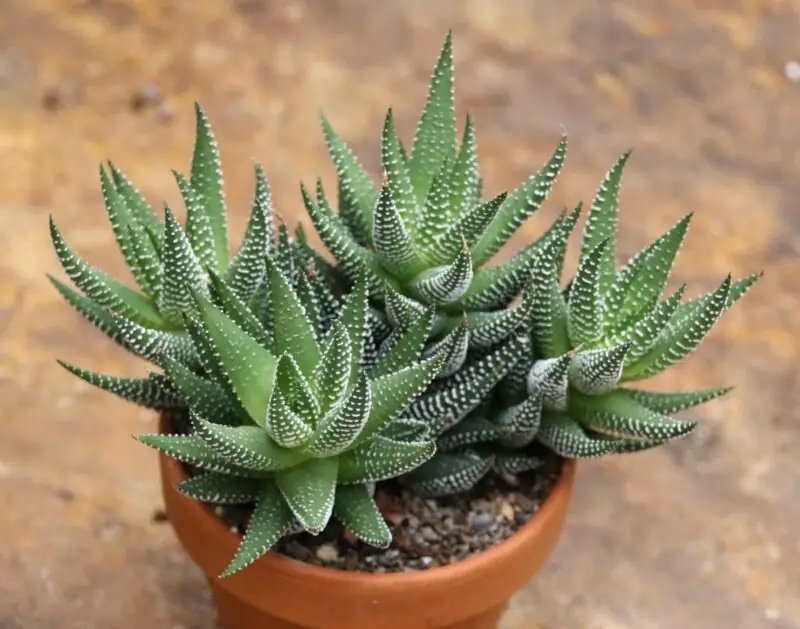
The Zebra cactus, also known as the Haworthia plant, has pointed leaves with silvery-white stripes that look like threads and run horizontally. They are native to South Africa and are commonly grown indoors due to their small size. If you want to find a succulent for your home, Zebra cactus can be a great alternative to Aloe vera.
Hechtia: Spiky Leaves
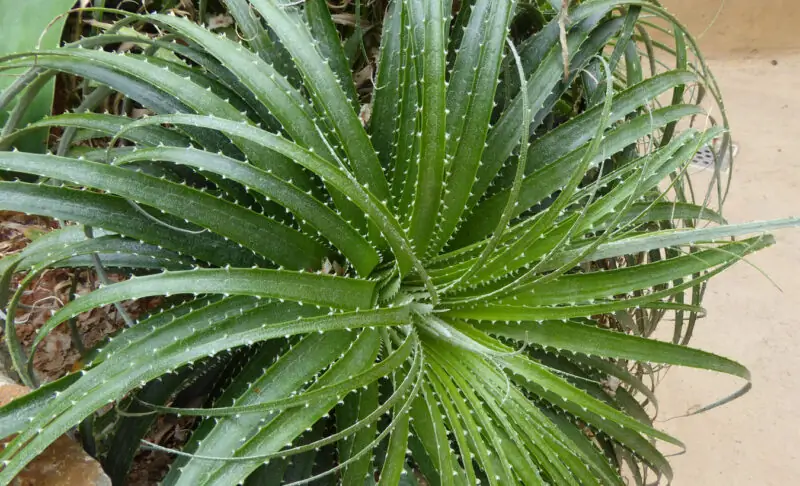
Hechtias is a genus of bromeliads primarily found in Mexico. While these plants are not related to the Aloe vera, their stiff, spiky foliage that forms rosettes looks very much the same. These plants produce colorful flowers during the summer months, attracting pollinators such as hummingbirds and bees.
Pineapple Plant: You Know It!
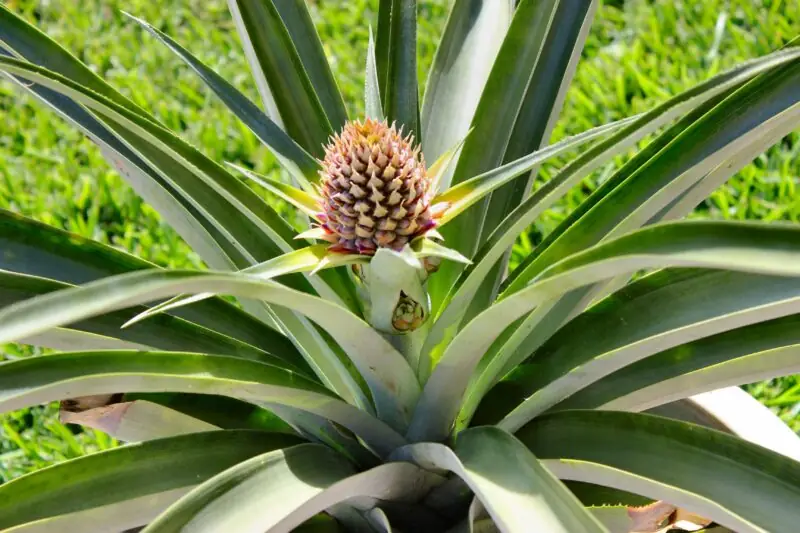
The pineapple plant (Ananas Comosus) is an edible fruit-producing member of the bromeliad family. It is native to South America but widely cultivated worldwide for its sweet, juicy flesh and rich vitamin content. The leaf tops can be replanted for new growth or ornamental purposes.
Snake Plant: Leaves Like Snakes
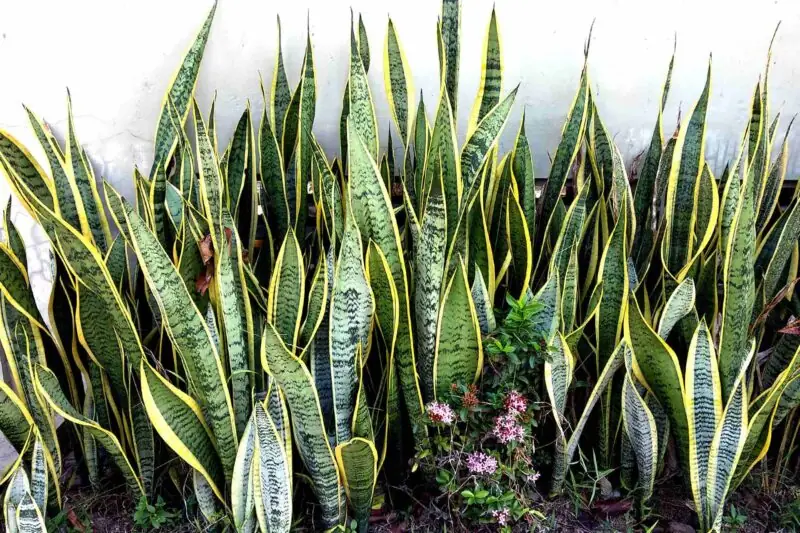
Snake plants, also called sansevierias, are popular houseplants due to their easy care requirements and ability to purify indoor air. They adapt well to various lighting conditions, humidity levels, and temperature ranges. The plants have an attractive appearance resembling sword-like blades with variegated coloration patterns.
Sansevieria Hybrid
Sansevieria hybrids result from cross-breeding different varieties, resulting in unique characteristics not seen in standard cultivars. Examples include golden hahnii, bird’s nest, moonshine, cylindrical, and starfish.
Sansevieria Trifasciata (Mother-in-law’s Tongue)
Sansevieria trifasciata, also called mother-in-law’s tongue, has broad elongated leaves arranged in a rosette form. The stems reach up to four feet tall, and white flowers bloom during the summer months. This plant prefers bright indirect light, well-drained soil mixtures, and occasional watering cycles.
More Examples of Plants That Look Like Aloe Vera
Apart from the agave, tiger jaws, and zebra cactus plants that resemble aloe vera, there are several other types of lesser-known succulents that could be mistaken for an aloe plant. So, here is an overview of even more common plants that are often mistaken for Aloe vera.
Carrion Flower (Stapelia Gigantea)
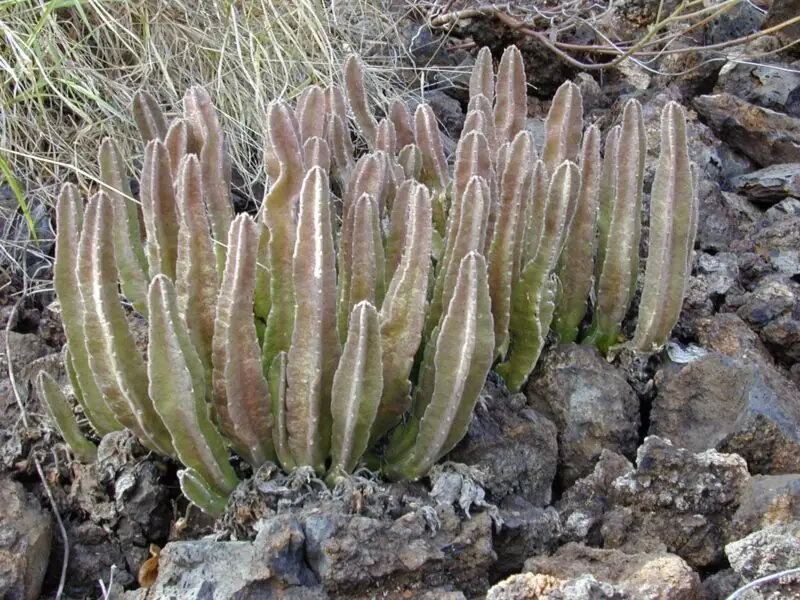
The carrion flower may seem like an unlikely candidate for resembling aloe vera. However, its spiky texture makes it look incredibly close to certain varieties of aloes, such as Aloidendron dichotomum or Kumara plicatilis when viewed from afar.
Native to South Africa’s arid regions, this flowering succulent belongs to the Apocynaceae family, which also includes oleanders and periwinkles. The stapelia gigantea produces large star-shaped flowers with dark red petals covered in hair-like projections. These give them their characteristic rotten-meat odor, meant to attract flies who pollinate these unique blooms.
Yucca
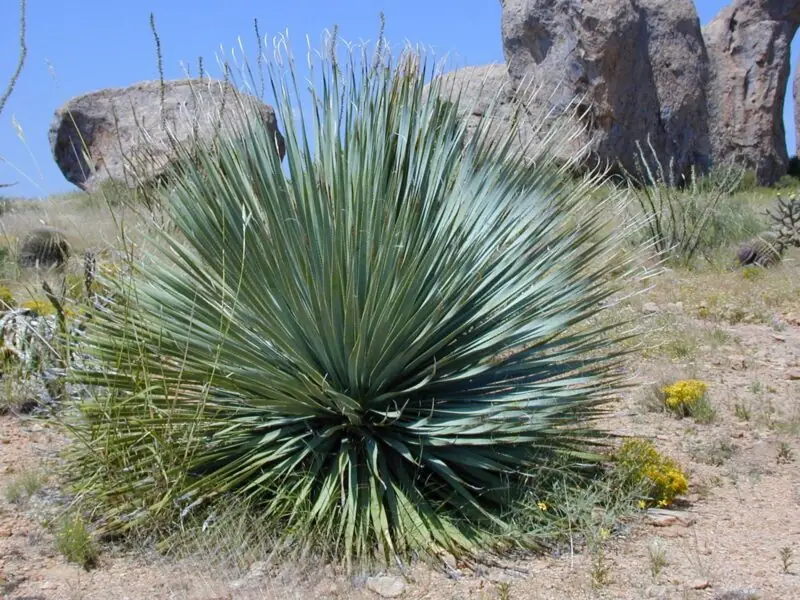
Yuccas are fleshy-leaved evergreen shrubs native primarily to eastern Mexico and southwestern United States. They grow successfully under various conditions, from hot deserts to grasslands, all year round without much water supply. This makes them ideal xerophytic companions for your garden space!
Some yuccas have rosettes similar in shape to those found on most species within the genus ‘Aloe.’ For example, Y.agavifolia or Spanish Bayonet has bluish-green leaves that can reach up to 4-5 feet tall. They form striking architectural displays, especially at night when illuminated by moonlight, creating dreamlike sceneries reminiscent of desert landscapes.
Red Hot Poker Aloe (Kniphofia Uvaria)
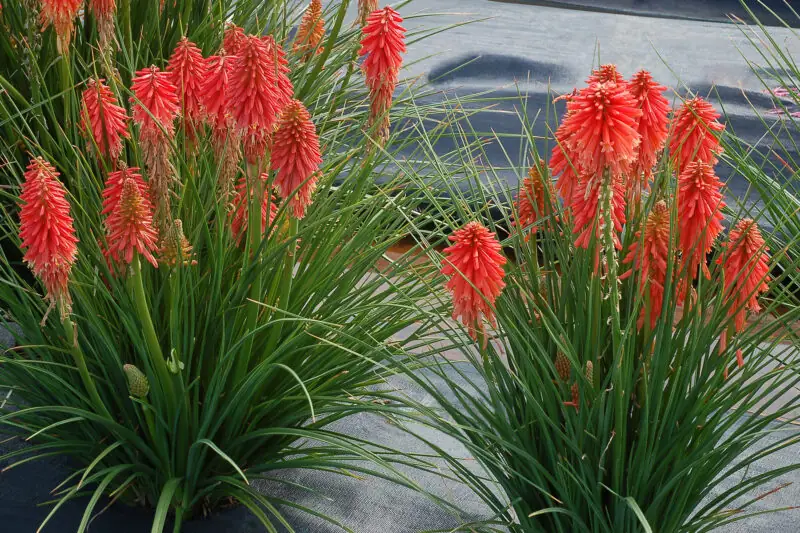
Kniphofia uvaria, also known as Torch Lily Plant, is another plant that looks like aloe vera. It’s native to South Africa and has been introduced in many parts of the world as an ornamental plant.
This plant grows up to 4 feet tall, with long green leaves that are thick and fleshy, similar in appearance to some species of aloes. The flowers bloom from late spring through summer, attracting hummingbirds that pollinate them while feeding off their nectar.
Uitenhage Aloe (Aloe Vryheidensis)
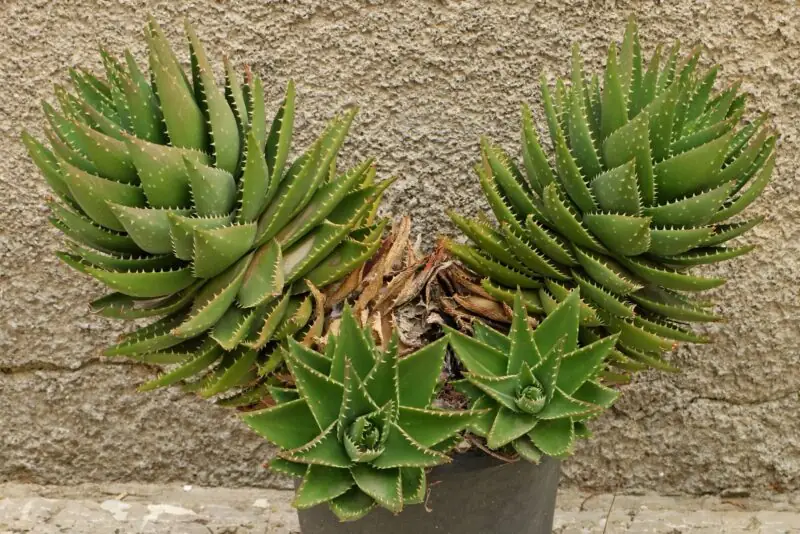
Known for its bright yellow or orange flowers atop tall spike-like stalks, A.vryheidensis is another lookalike plant closely related to Aloe vera. The Uitenhage Aloe typically grows in rocky soils at elevations between 1000-2000m above sea level. This makes it an ideal choice for gardens located in higher altitudes, where temperatures stay cooler all year round. Another variety – Aloe aristata – is very similar in appearance, so if you are interested in the Uitenhage Aloe, you might want to look this plant up as well.
These sun-loving succulents grow healthy, strong stems and bloom profusely every winter season.
Tiger Tooth Aloe (Aloiampelos Ciliaris)
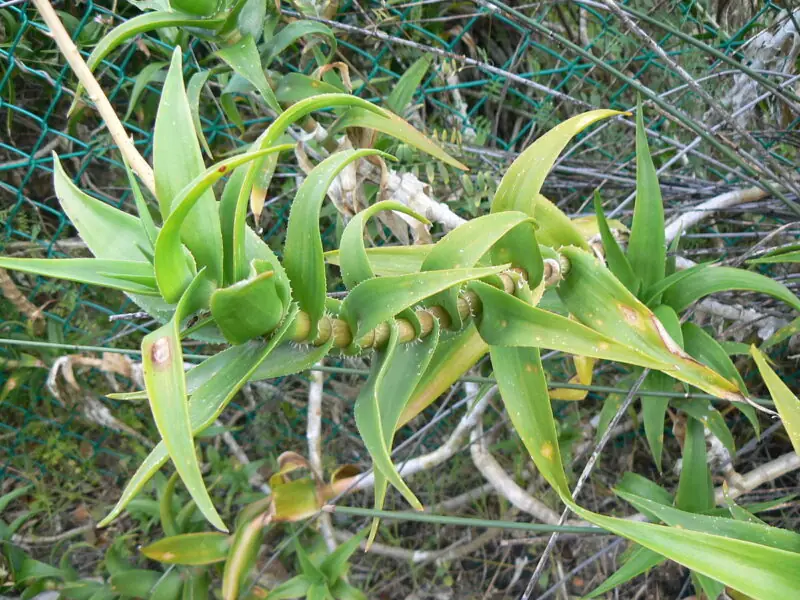
Native to Madagascar, Tiger Tooth Aloes have slender pointed foliage forming dense rosettes covered with uniform white tubercles resembling tiger teeth. These small shrubs reach only about one foot in height, but they often multiply into clusters, creating stunning displays when planted en masse. If you are not attentive enough, the foliage of Tiger Tooth Aloes can also be mistaken for Aloe vera leaves.
Their orange-red blooms emerge during autumn months, lasting several weeks before fading away, leaving behind seed pods containing numerous viable seeds ready to germinate following rainy spells.
Another Aloe variety, namely, Aloe Africana, looks very much the same with rather slender leaves and a dense central rosette. It is not uncommon for people who only dabble in gardening to confuse one of these varieties with another.
Sawblade Plant (Aloiampelos Saponaria)
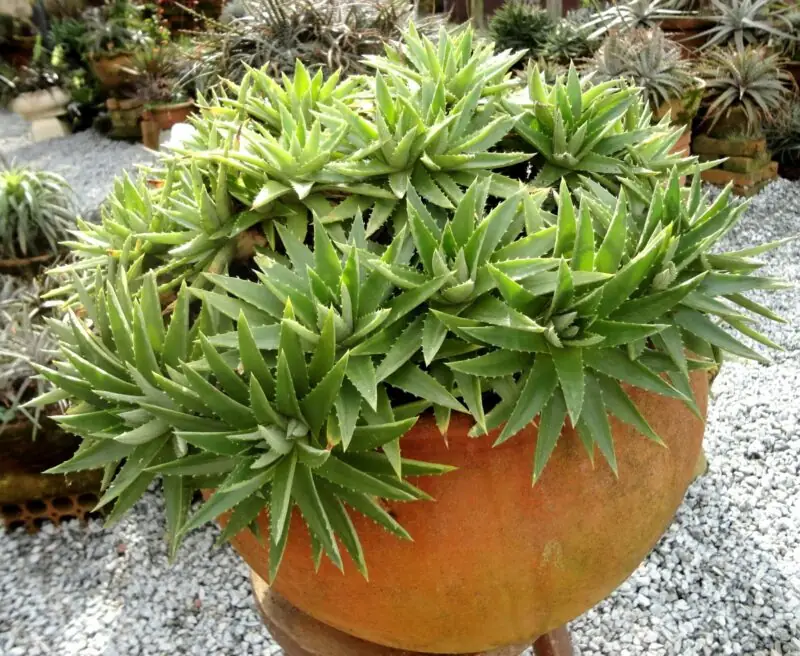
Sawblade plants are another species of succulent that resemble aloe vera. They grow well in gardens with full sun exposure and infrequent watering, making them ideal for drought-prone regions.
The plant’s leaves have sharp teeth along their margins, giving the foliage an appearance similar to saw blades, hence its common name. The Aloiampelos Saponaria blooms during late winter through early spring, producing tubular flowers ranging from bright pink to purple hues. These delicate beauties attract bees and butterflies, which pollinate them.
Comparing Aloe Vera and Lookalike Plants
While it’s true that several types of plants could be mistaken for aloe vera, there are some key differences in terms of their appearance and uses.
Appearance
Aloes come in different shapes, sizes, and colors depending on the variety. However, most share certain characteristics, including fleshy leaves arranged in rosettes. Each leaf contains a gelatinous sap capable of treating various skin conditions, wounds, and burns effectively. This is thanks to the antiseptic and antibacterial properties contained within this miracle substance!
In contrast, lookalikes such as agave or tiger jaws feature spiky textures resembling cacti more than aloes. They also store water similarly in thickened tissues meant to survive prolonged periods without much external hydration.
Plant Look: Green Plants, Striped Plants, and Thin Stems
Agaves typically have thick fibrous stems covered by long, narrow, pointed dark-green-blue-grayish colored leaflets. These leaflets form symmetrical rosette arrangements with sharp needle-like points at their tips. Zebra cactus haworthias exhibit white stripes running vertically down the center areas between individual pairs of leaves. These stripes are not present among aloes except in hybrids showing varied pigmentation patterns due to breeding experiments.
Bloom: Plants with Different Bloom Compared to Aloe Vera
Plants like yuccas or red hot poker produce showy bell-shaped flowers on tall stalks that bloom in clusters. Uitenhage aloes feature bright yellow-orange tubular blossoms atop a tall flower spike. Tiger tooth and saw blade plants also produce similar blooms but with different hues ranging from pink to purple, depending on the species’ variety.
Uses
While the medicinal properties of Aloe Vera are well-known in treating various skin conditions, some lookalike plants have their own unique uses.
Medicinal Benefits of Aloe Vera
Apart from its cosmetic applications, such as moisturizing creams or gels used to soothe dry, itchy skin, burns, scrapes, and small cuts, Aloe vera is also widely known in traditional medicine. It can help cure constipation, digestive issues, allergies, asthma, diabetes, and many other ailments.
Uses of Lookalike Plants
The agave plant was historically cultivated by indigenous peoples living throughout Mexico for making alcoholic beverages such as tequila, pulque, and mezcal. These products are still consumed today worldwide! Similarly, red hot poker has been used for centuries as an herbal remedy to relieve pain and inflammation associated with arthritis and rheumatism.
In the next section, we will discuss poisonous plants that resemble aloe vera, so you can be fully aware of distinguishing between these potentially dangerous imposters and avoid accidents and potential harm.
Poisonous Plants That Look Like Aloe Vera
While there are many plants that resemble the popular succulent, not all of them are safe to handle or consume. It’s crucial to distinguish between non-toxic and poisonous plants that look like aloe vera to avoid any health risks.
Identifying Poisonous Plants
Before we dive into specific examples of toxic plants, it’s essential to know how you can identify these types of flora. One way is by examining their leaves’ edges: if they have sharp spines or serrated margins, it could be an indication that they’re poisonous.
Another thing you should pay attention to is the plant’s overall appearance and growth pattern. Some poisonous lookalikes may have different colors than a typical aloe vera plant; for instance, some may exhibit unusual yellowish-green hues instead of the blue-green tones commonly seen in aloes.
It would help if you also looked out for other characteristics such as flowers and fruits when identifying potentially dangerous species.
In general, stay away from any unfamiliar-looking foliage with unknown growth patterns until you’ve confirmed its safety.
Examples of Poisonous Plants That Look Like Aloe Vera
One example of a hazardous plant similar in appearance but different in properties is the Agave lechuguilla (Lechuguilla), which grows mainly across several states in Mexico but has been introduced elsewhere too.
The sap produced by this type contains saponins – chemicals responsible for irritations in contact with skin tissues – which makes handling Lechugullia risky without proper protective gear.
Another common harmful succulent similar to Aloe Vera includes Sansevieria trifasciata cv ‘Laurentii,’ known as “Mother-In-Law’s Tongue.” The nickname comes from its long snake-like leaves resembling tongues sticking out. Caution is required while dealing with this variety since ingesting even small amounts can cause nausea and vomiting due primarily to its high levels of saponins.
Safety Precautions and Handling
If you’re unsure whether a plant is poisonous or not, it’s best to take precautions and handle it with care. Always wear gloves when handling any unknown flora that looks like Aloe Vera and avoid touching your face while doing so.
Suppose you ingest any part of the plant accidentally; seek medical attention immediately. Keep in mind that some toxic plants may have delayed symptoms, which means consulting a healthcare professional would be wise even if no immediate effects are noticed.
FAQs
Here are answers to some frequently asked questions about plants similar to Aloe Vera:
There are many types of succulents besides Agave Americana (American Century Plant), Sansevieria trifasciata cv ‘Laurentii,’ Tiger Jaws (Faucaria Tigrina), Ox Tongue Plant (Gasteria), Zebra Cactus (Haworthia) among others that resemble an aloe vera plant’s appearance but differ from each other in several ways such as texture, coloration patterns on leaves, etcetera.
It’s essential to differentiate between them since their uses can vary depending on the species.
Although there aren’t many aquatic plants resembling Aloes’ features directly – mainly due to differences in water requirements across these groups – some aquarium enthusiasts use Anubias barteri var. Nana for its similarity with aloes’ foliage texture.
However, note that this does not mean they share identical properties or should be used interchangeably without proper research beforehand!
While many lookalike succulent varieties may have medicinal benefits associated with them, such as treating skin conditions caused by insect bites, they cannot substitute Aloe Vera’s unique properties like its anti-inflammatory and wound-healing effects.
It’s essential to know that using any plant for medicinal purposes should be done only after consulting with a healthcare professional.
To differentiate between an aloe vera plant from other succulent varieties, you need to look at several factors such as:
Leaf shape
Coloration patterns on the leaves
Growth pattern (tight rosettes vs. sprawling)
Stem texture
If you’re still unsure about what type of species is in front of you, it’s best to consult with an expert or do some research before handling it.
Conclusion
Knowing how to tell Aloe Vera apart from other plants is important for staying safe and getting the benefits you want. While there are some common plants that look like Aloe Vera, they can be dangerous if eaten or handled wrong. It’s better to be careful when dealing with unknown plants.
There are several similar-looking plants, including agave, snake plant, bromeliad, yucca plant, and Sansevieria trifasciata cv ‘Laurentii’. While some of these have good properties too – like healing wounds or reducing inflammation – they’re not quite the same as Aloe Vera.
To avoid confusion and stay safe while growing your collection of medicinal herbs at home it’s essential that gardeners learn about different types of aloe vera so that they can make informed decisions about which ones will work best for them!